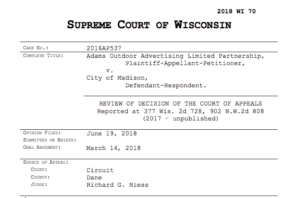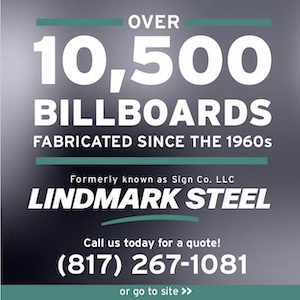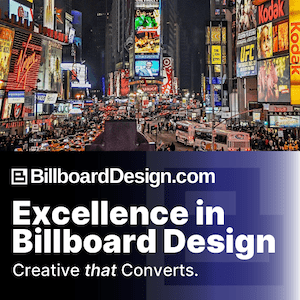
The Wisconsin Supreme Court ruled 4-3 that the City of Madison’s construction of a bridge which blocked visibility of a billboard is not a property taking requiring just compensation.  Here’s a summary of Adams Outdoor v City of Madison.
Here’s a summary of Adams Outdoor v City of Madison.
- Adams bought a two sided billboard located near the Beltline Highway in Madison for $200,000 in 2007.
- The billboard is non-conforming so can’t be modified or relocated.
- In 2013 the city built a pedestrian and bicycle bypass crossing the Beltline which obstructs the west-facing side of the billboard.
- Adams appraiser valued the billboard at $1.46 million before the bridge was erected and $720,000 after the bridge was erected.
- Adams filed a complaint asking for just compensation arguing that the City’s construction of a bridge deprived Adams of the beneficial uses of its property. The City argued that there is no property right to visibility of a billboard.
- Lower courts ruled in the city’s favor and the Supreme Court upheld the decision by a 4-3 ruling arguing “In sum, we conclude that a right to visibility of private property from a public road is not a cognizable right giving rise to a protected property interest.”
Insider’s take: Worrisome that a city which has been feuding with Adams could choose to destroy the value of Adams billboards by planting trees or erecting bridges and bikepaths in such a way that the billboards are blocked and their value is destroyed.
[wpforms id=”9787″]
Paid Advertisement


















Was this the State Supreme Court, seeing above that it was! Question if so , can they take to Federal Supreme Court? Thanks
Good question. We’ll investigate and look at potential options.
Obviously the bridge took planning and construction time. I’m sure it was made public that the bridge would happen. Did Adams take steps in that time to negotiate with the city for approval to move the billboard or receive a new permit for a different location? Or did they just wait for the bridge to be completed and then sue?
It seems to be a simple solution to ask for the blocked face to be allowed to be reinstalled on the other side of the bridge. While there would be cost associated with the structure, it would be significantly less than the lawsuit.
Perhaps this is the ultimate objective of the lawsuit……